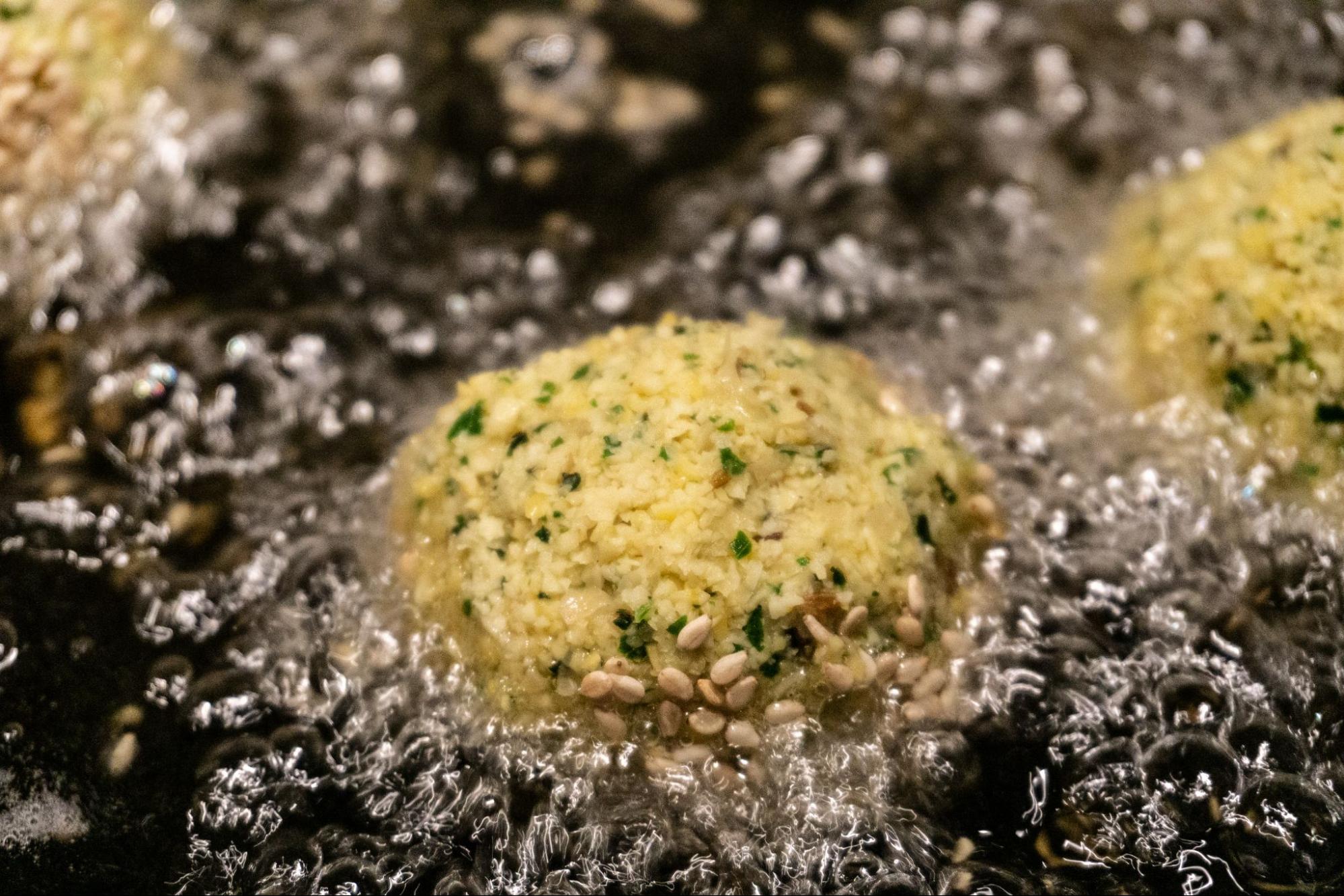
Choosing the healthiest cooking oil for indian cuisine
Imagine the intoxicating aroma of sizzling tadka as mustard seeds crackle in hot oil. Envision the rich fragrance of a simmering curry, its complex spices releasing their essence. Now picture the vibrant colours of a freshly prepared dish, a symphony for the eyes. Indian cuisine is a true feast for the senses, a delicious orchestra where every element plays a crucial role. But what conducts this culinary masterpiece? The healthy oil for Indian cooking you choose acts as the silent maestro, influencing both the depth of flavour and the health benefits of your creations.
In this blog, we'll embark on a journey into the world full of umpteen best healthy cooking oils. We will help you pick the most healthy oil for Indian cooking. We'll delve into the unique properties of popular options like mustard oil, known for its pungent kick and high smoke point; coconut oil, adding a touch of sweetness and tropical aroma; and peanut oil, a versatile choice with a neutral flavour profile. Along the way, we'll explore the health benefits of each oil, including their content of heart-healthy fats and essential vitamins.

The importance of choosing the best healthy cooking oil
There are two main reasons why choosing the best healthy oil for Indian cooking is important for your health and the taste of your food:
Health benefits:
Different oils contain varying amounts of different types of fats. Saturated and trans fats can raise your "bad" LDL cholesterol and increase your risk of heart disease. On the other hand, healthy fats like monounsaturated and polyunsaturated fats can actually lower your bad cholesterol and boost your good HDL cholesterol. Choosing the most healthy cooking oil which is rich in healthy fats is a simple way to incorporate them into your diet.
Flavour and cooking technique:
Each oil has its own unique flavour profile and smoke point. Smoke point is the temperature at which the oil starts to break down and smoke. Using an oil with a low smoke point for high-heat cooking can impart a burnt flavour to your food and potentially create harmful compounds.For example, mustard oil has a high smoke point and a pungent flavour, making it ideal for tempering (tadka) where a quick burst of heat releases its aroma. In contrast, olive oil has a lower smoke point and a delicate flavour, perfect for salad dressings or low-heat cooking.
By understanding the health benefits and cooking properties of different oils, you can make informed choices that enhance your health and elevate the taste of your Indian cuisine and pick a healthy oil for cooking Indian food.

Best healthy cooking oils for Indian cuisine
Indian cuisine offers a vibrant tapestry of flavours, and choosing the right heart healthy cooking oil can significantly impact both health and taste. Here are some top contenders for healthy cooking oils in your Indian culinary adventures:
Mustard oil:
This hero of North Indian cooking boasts a high smoke point, making it ideal for tempering (tadka). Its pungent aroma adds depth, but use it sparingly due to its strong flavour. It's a good source of monounsaturated fats and may offer some heart-healthy benefits.
Rice bran oil:
A rising star, rice bran oil offers a neutral flavour profile that won't overpower delicate spices. Its high smoke point allows for various cooking methods, from stir-fries to shallow frying. It's packed with antioxidants and boasts a good balance of healthy fats.
Groundnut oil (peanut oil):
This versatile oil has a high smoke point and a subtle nutty flavour that compliments many Indian dishes. It's a good source of monounsaturated fats and may contribute to lowering bad cholesterol.

Sesame oil:
While not for high-heat cooking due to its lower smoke point, sesame oil adds a delightful nutty aroma and depth of flavour when used for seasoning or drizzled on finished dishes. It's rich in antioxidants and contains good fats.
Coconut oil:
A popular choice in South Indian cooking, coconut oil offers a unique sweetness and tropical aroma. While high in saturated fat, some studies suggest its medium-chain triglycerides may offer health benefits. Use it moderately and for medium-heat cooking.
Ghee (clarified butter):
Although not technically an oil, ghee is a staple in Indian cuisine. It has a high smoke point and a rich, nutty flavour, making it perfect for various cooking methods. However, it's high in saturated fat, so use it in moderation.
Remember, the best healthy cooking oil choice depends on the specific dish and cooking technique. This list provides a starting point for exploring healthy options that will enhance your Indian culinary creations.

Factors to consider when selecting healthy cooking oils
Here are the key factors to consider when selecting which oil is healthy for cooking:
Fat content:
This is the big one! Focus on oils with a high content of healthy fats, specifically monounsaturated and polyunsaturated fats. These fats can actually lower your bad LDL cholesterol and boost your good HDL cholesterol, contributing to heart health. Limit saturated and trans fats, which can raise bad cholesterol and increase your risk of heart disease.
Smoke point:
Every oil has a smoke point, the temperature at which it starts to break down and smoke. Using an oil past its smoke point can:
- Impart a burnt flavour to your food
- Create harmful compounds
Consider the cooking technique when choosing your best healthy oil for Indian food. For high-heat methods like frying or stir-frying, you'll need an oil with a high smoke point (think avocado oil, peanut oil, or rice bran oil). For lower-heat cooking like sauteing or simmering, you can use oils with a lower smoke point (like olive oil or sesame oil).

- Flavour profile: Different oils have distinct flavours that can enhance or even overpower your dish. A neutral-flavoured oil like canola oil might be perfect for delicate dishes, while a more robust oil like mustard oil can add a pungent kick to curries.
- Nutritional value: Look beyond just the type of fat. Some oils offer additional health benefits. For example, olive oil contains antioxidants, while avocado oil boasts a good amount of heart-healthy monounsaturated fats and vitamin E.
- Processing: Virgin or cold-pressed oils are minimally processed and may retain more antioxidants and other beneficial compounds compared to highly refined oils. However, refined oils often have a higher smoke point, making them more versatile for cooking.
By considering these factors, you can make informed choices about a healthy oil for Indian cooking, promoting both health and delicious flavour in your culinary creations!

Conclusion
Choosing the right healthy oil for Indian cooking is like selecting the perfect spice – it can elevate your dish to new heights. By focusing on oils rich in healthy fats, considering smoke points for different cooking techniques, and exploring the unique flavour profiles each oil offers, you'll be well on your way to creating healthier and more flavorful Indian meals. So, ditch the confusion and embrace the exploration! With the knowledge you've gained here, you're ready to embark on a delicious journey, one perfect pour at a time.

Frequently Asked Questions
How can I identify the quality and authenticity of healthy cooking oils in the market?
Look for certifications like "cold-pressed" or "virgin" for minimal processing and choose reputable brands with clear labels mentioning fat content and smoke point.
How does the choice of cooking oil impact the taste of Indian dishes?
Each oil boasts a unique flavour profile - a neutral oil lets your spices shine, while a fragrant oil like mustard adds its own depth, creating a nuanced taste experience in your Indian dishes.
Which cooking oil is healthy for Indian cooking and why?
Which oil is healthy for cooking, you ask? Rice bran oil is a healthy choice for Indian cooking. It's high in good fats, neutral-flavoured to complement spices, and boasts a high smoke point for various cooking methods.
Can I substitute traditional ghee with other healthy cooking oils in Indian recipes?
Yes, you can substitute ghee with healthy oils like peanut or rice bran oil for most Indian recipes. These options offer similar smoke points and are lower in saturated fat.
What is the best oil for deep frying in Indian cuisine while maintaining health benefits?
Groundnut oil (peanut oil) is a great choice for deep frying in Indian cuisine. It has a high smoke point for withstanding hot oil temperatures and is a good source of monounsaturated fats, offering some health benefits compared to other options.









